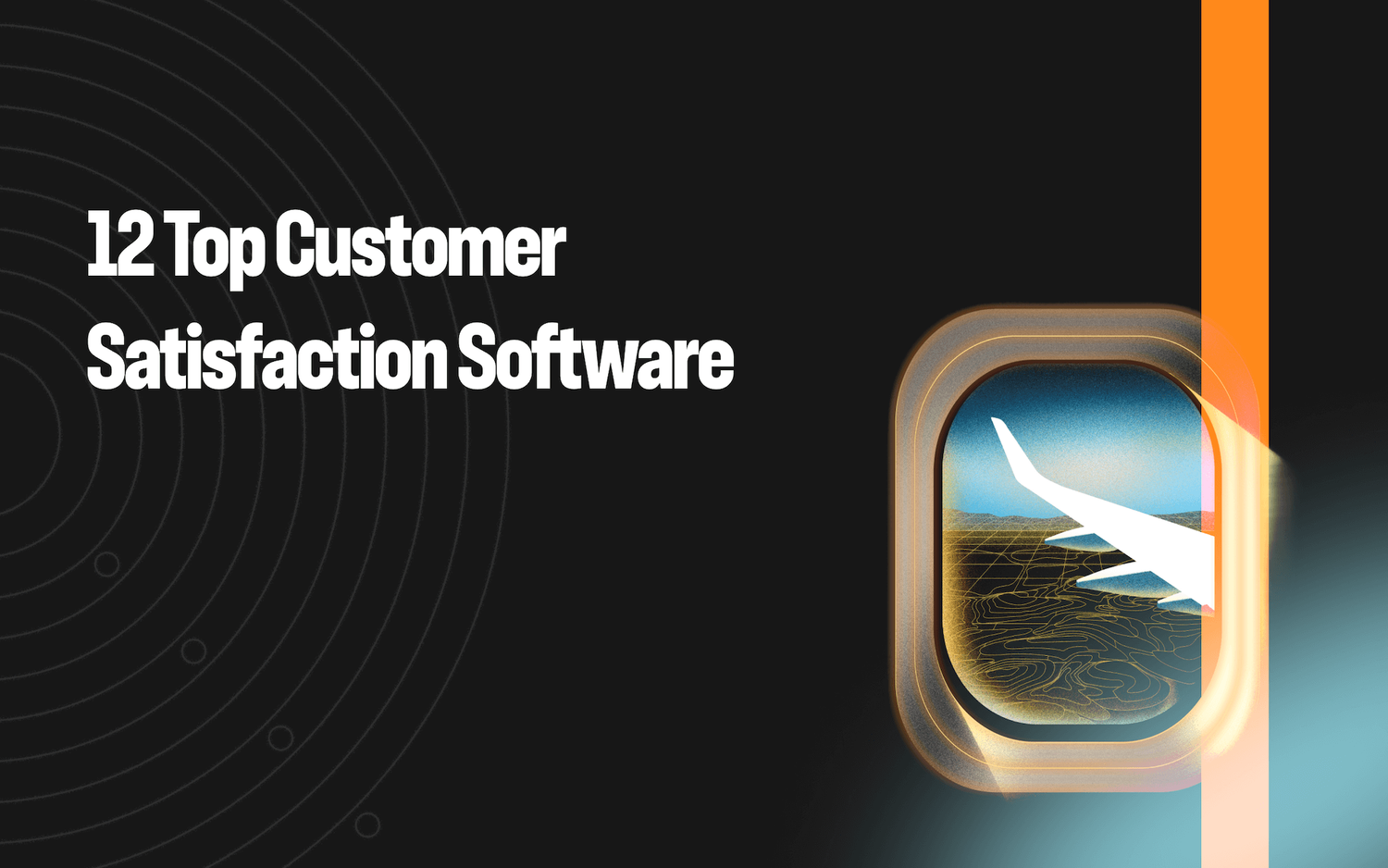5 Bulletproof Ways to Improve CSAT Score in Your Contact Center


So you want to know how to improve CSAT scores in a contact center? Improving CSAT scores in a call center is critical for most businesses.
While the gold standard for CSAT scores is 80% for excellent performance, the average across all industries is only 15%.
The primary goal of every Quality Assurance (QA) Analyst is to improve the quality of customer service. Their aim is to ensure the delivery of a consistent customer experience from the entire team.
Achieving these goals requires tracking agent performance at frequent intervals, providing personalized feedback and coaching, as well as monitoring support agent progress over time.
This article will cover CSAT scores and guaranteed ways to improve, track, and measure them. After all, these scores indicate how well you are doing to meet customer satisfaction goals. And if they are low, you know you’ve got some work to do.
What Is a CSAT Score in Customer Service?
CSAT stands for customer satisfaction. Therefore, the CSAT score, or customer satisfaction score, tells you how satisfied customers are after interacting with your call center or contact center.
Your CSAT score measures whether customers are satisfied with their experience, and whether they will recommend you to others.
So, how does a CSAT score work?
How to Measure CSAT
Customers are sent a short survey after a support conversation and their response helps the team understand their quality of service.
Customers are sent a short survey after a support conversation and their response helps the team understand their quality of service.
Common questions on a customer satisfaction survey include:
- How would you rate your experience with our product or service?
- How likely are you to recommend our product or service to others?
- How easy was it to navigate our website or to make a purchase at a physical location?
- How knowledgeable and helpful were our staff members?
- How would you rate our product or service?
- How satisfied were you with the prices of our product or service?
- Did you find everything you were looking for?
- Do you have any additional feedback?
When responding to these questions, the customer can often select from a range of responses. Frequently, they may be asked to rate their response on a scale of 1-5 or 1-10. The reactions can be aggregated to measure customer satisfaction using the following formula:
- CSAT Score Formula: # of positive responses/# of total responses x 100 = CSAT %
Asking a variety of questions on your survey can help you understand different aspects of the customer experience. You can also see specific customer feedback examples that can directly tell you how to improve your customer service.
Despite not having any control over what the customer chooses in a survey, a support team can do a lot of things to influence a customer to provide a positive CSAT score. Some example ways to have a positive effect on CSAT scores include:
- Faster response times
- Providing a proper solution to a customer’s problem
- Escalating the issue to the right person at the right time
- Following up at the promised time with the right course of action
A related data point to CSAT is Net Promoter Score (NPS). NPS is a customer satisfaction survey designed to measure customer loyalty and satisfaction.
This score uses a standard customer satisfaction survey and a rating scale of 1-10. And it is calculated by dividing the number of promoters by the number of detractors. Detractors are defined as those who answer the question of how likely they are to recommend the company as less than 6. Promoters are those who answer with a 9 or 10.
These types of customer satisfaction metrics play a tremendous role in helping you to identify strategies for improving your CSAT scores.
5 Strategies to Improve CSAT Scores in Your Call Center
Whether you use a CSAT survey after a customer experience or simply ask customers a quick question to calculate your net promoter score, nearly all call centers will have areas to improve.
One way to increase customer satisfaction and lifetime value is to incorporate customer feedback into your business.
There are many strategies for improving a CSAT score. Here are five of the most effective and actionable ways to dramatically improve CSAT scores today!
1. Spending more time focusing on one-on-one communication
With some customers, there is no substitute for direct, one-on-one attention with another human.
Several studies have shown that more real-time customer interactions, including those that incorporate personalization through AI technologies, increase a company’s CSAT score.
While automation has an ever-growing role in contact centers, it’s to your advantage to arm your agents with AI. AI will help your agents deliver better, more efficient support rather than automating customer interactions.
The truth is, chatbots simply aren’t sufficient enough to meet even slightly complicated customer scenarios. If you want to keep your customers happy, the best approach is to augment agent performance with AI/machine learning. You don’t need to replace agents entirely.
2. Monitor and track the right call center metrics
The entire exercise of measuring customer satisfaction relies on data. And as such, you must know how to interpret that data.
Identifying performance indicators, such as average handling time (AHT), average first response time, and overall service levels are key. These KPIs can shed light on why unhappy customers are providing the responses they are.
So, the first course of action is to identify how to measure what matters most to your customers.
You can identify areas where performance can improve with accurate KPIs in hand. Performance indicators affect the CSAT score, but you can’t see their influence if you aren’t measuring your performance.
The best contact center software solutions today are solving these issues for modern contact centers via AI-powered analytics.
AI-powered analytics provides you with a unified view of everything that happens in your contact center. It will also help you slice and dice your data the way you want.

For example, Level AI provides a unified view of everything happening in your contact center with native dashboards and custom reports for QA teams and support agents.
3. Adopt platforms and technologies that enhance performance
You need the right tools for every job, and with so many technologies to choose from, you need to consider all of your options. This is especially true when it comes to AI for customer service.
For example, your organization may benefit from advanced contact center software to customize agent grading systems. The software will assist support agents in real-time, and incorporate other services to enhance customer support.

For example, Level AI understands customer intent and provides real-time solutions to support agents with 2X the accuracy of legacy call center systems.
Another best practice is to record interactions and identify areas of improvement for training purposes. Many digital solutions can also integrate with existing databases, giving agents a ton of past customer information to enhance customer interactions.
Modern contact centers should consider leveraging call center AI to streamline customer experiences, customer routing, and more.
4. Enhance your quality assurance processes
Quality assurance involves providing high-quality customer service that matches the company’s standards. And to accomplish this, quality assurance focuses on the customer, their issues and needs, and the overall customer journey.

By understanding how all of these elements relate, quality assurance can improve the customer experience. This process is commonly done by a team member who can review interactions and coach agents. You may also want to invest in quality assurance AI tools designed to scale this process with even better outcomes.
5. Introduce more support channels
More support channels are crucial in providing a better customer experience. By offering multiple channels for communication, you are accounting for the differences in customer preferences.
Better yet, top contact centers are rapidly adopting omnichannel software platforms. Level AI, for example, allows support agents to provide a seamless customer experience across voice calls, email, and chat.
The bottom line is that some customers want one-on-one personal conversations; others would prefer chat or email support features. This versatility ensures communication with your contact center is available in the format that works best for your customers.
Your Action Plan to Improve Customer Satisfaction (CSAT) Scores
CSAT scores are more important than ever before. In hyper-competitive markets, customers know they hold more power. Consider the following statistics:
- Average First Response Time
- Average Handling Time (AHT)
- Dead-Air Ratio
There is no room for error. Customer retention is one of the best ways to reduce customer churn, increase customer lifetime value and loyalty. And both of these factors drive costs down and increase profits.
CSAT scores should be considered in order to achieve customer experience goals.
If you’re a QA or contact center manager, you can use Level AI’s Custom Dashboard to create and view custom data for any time period. Additionally, you can filter and group metrics based on various parameters such as agents, support channels, categories, and much more.
Level AI analytics will help your team understand the company-wide trend in terms of quality and performance. Furthermore, you’ll also be able to identify outliers and customize training and feedback for individual agents.
The findings from these reports will help your QAs to course-correct agent behavior and achieve better CSAT scores. To learn more about how Level AI can help your CSAT score and more, schedule a demo.
Keep reading
View all





